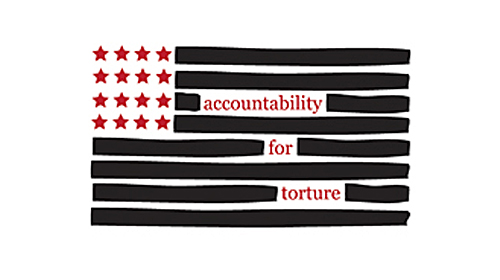
In an email sent to potential supporters a few days before releasing his book on CIA torture, Jose Rodriguez, the former head of the CIA’s Counterterrorism Center and its former Deputy Director of Operations, complained that his book, Hard Measures, would “be attacked from many quarters—mostly by people who will never read it.”
Having just finished reading Mr. Rodriguez’s book, I am confident that its readers will be critics, too. Hard Measures is a shameless defense of torture, and it is a dishonest one. At its core, the book has two central contradictions.
First, Mr. Rodriguez portrays the CIA’s “enhanced interrogation techniques” simultaneously as lawful and therefore unexceptional, and as exceptional “hard measures” that democracies must employ when necessary. There is an inescapable tension between his two narratives. In the first, we don’t torture because “enhanced interrogation” isn’t torture. In the second, we have no choice but to suspend the normal rules and to design an interrogation regime “specifically for these terrorists, in these circumstances, and for this period of time.” (p. 232, emphasis is Rodriguez’s).
Mr. Rodriguez attempts to evade this tension with wink-and-nod descriptions of the “enhanced interrogation techniques.” He resorts to euphemisms—“necessary roughness,” (p. 96), “unpleasant,” (p. 230), “shock value,” (p. 66), “harsh treatment,” (p. 103)—to obscure that they are torture. And in his 60 Minutes interview (dissected by the ACLU’s Devon Chaffee here), he suggestively stated that the techniques were designed to let the detainees know that there was “a new sheriff in town.” His meaning was clear: the techniques carried with them a threat of even greater abuse. In Mr. Rodriguez’s world of dehumanizing abstraction, detainees “were brought to a point of cooperation” but not subjected to “gratuitous pain.” (p. 64).
The formula described would be familiar to many of history’s torturers: mistreatment carefully calibrated to communicate a threat of worse treatment but to leave no marks. Rodriguez aims for a fiction: the “sweet spot” of torture.
We know from experience that Rodriguez’s defense of the “enhanced interrogation techniques” as lawful is wrong. Our own history and our State Department’s reports on the human rights violations of other countries teach us that some of the techniques employed by the CIA amounted to torture or to cruel, inhuman, and degrading treatment. They were war crimes, and they were domestic crimes. And at times even the CIA, Rodriguez reveals, recognized as much: “Long before the interrogation techniques became known and the subject of public and media debate, we elected to stop using some of them. Despite the fact that we had been given legal authorization, we simply weren’t comfortable with their use and never again employed them.” (p. 68).
Rodriguez also details the time that Senator Bill Nelson requested to be waterboarded by the CIA to decide for himself whether it was torture. The CIA refused, “[d]espite the fact that he appeared to be in great shape,” because they “wondered what would happen if he suffered a cardiac event during the experiment.” (p. 238).
Second, Rodriguez’s central claim that the CIA resorted to torture because it “heard the time bomb ticking,” (p. 253), is undercut by the facts as even he presents them.
Rodriguez asked the contractor who helped him design the torture program how long the “enhanced interrogation techniques” would take to work. The answer: “Thirty days.” (p. 62). How could the program be justified by the ticking-time-bomb theory if it wasn’t expected to work for thirty days? Rodriguez apparently didn’t expect it to: “We never suggested that the EITs would be a panacea. Once detainees became compliant, that did not mean that they would tell us everything they knew.” (p. 235). “Even the most severe technique, waterboarding, . . . did not produce immediate results.” (p. 92).
In attempting to claim the ultimate trophy sought by torture’s proponents—that torture led to the killing of Osama bin Laden—Rodriguez’s discussion is similarly strained: “I never said that the EITs were the immediate cause, or that they instantly led us to UBL. But without the EITs we might never have started on the long march that eventually allowed CIA analysts to come to the conclusion that UBL was probably holed up in Abbottabad.” (p. 109).
It is hard to accept that torture was necessary in the “long march” (nearly ten years, we now know) to locating Osama bin Laden. Two senators who have seen the evidence certainly don’t think it was. And it is hard to believe that a ticking time bomb was the true motivation for developing the program, when the program was not even designed to work for thirty days.
This is the problem with allowing fear of a threat to justify torture. As soon as the moral leap to torture is made, torture looks like the solution to every hard interrogation problem.
Late in his book, Rodriguez asks: “Could we have gotten the same information using typical FBI practices.” His answer: “Maybe.” (p. 231). Experienced interrogators are less equivocal. You can read their resounding opposition to torture in a few recent statements here, here, and here.
Torture is illegal. It betrays our ideals. It is fundamentally un-American. And even if we were to accept that torture “works,” Rodriguez’s book shows why it is immoral. It dehumanizes not only the victim but the interrogator.

